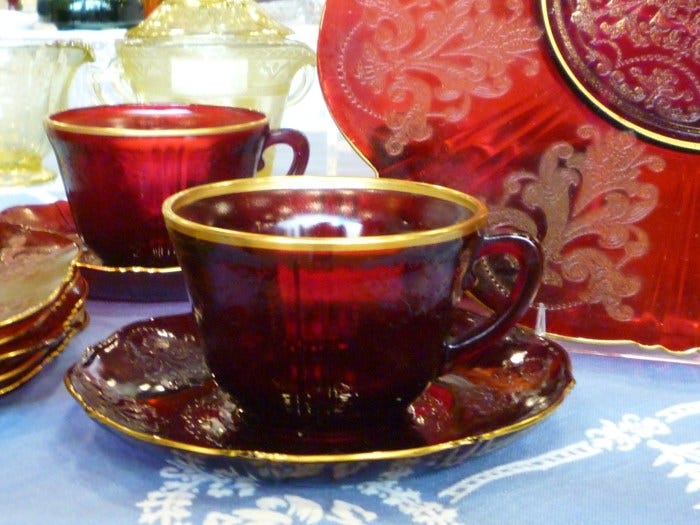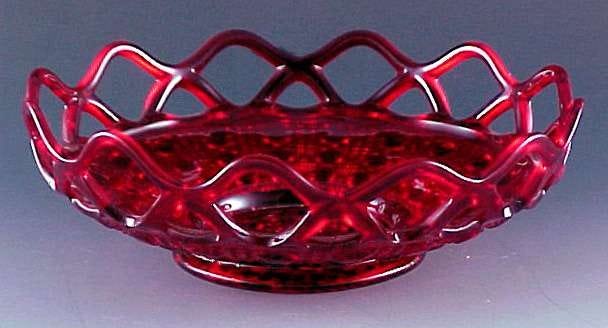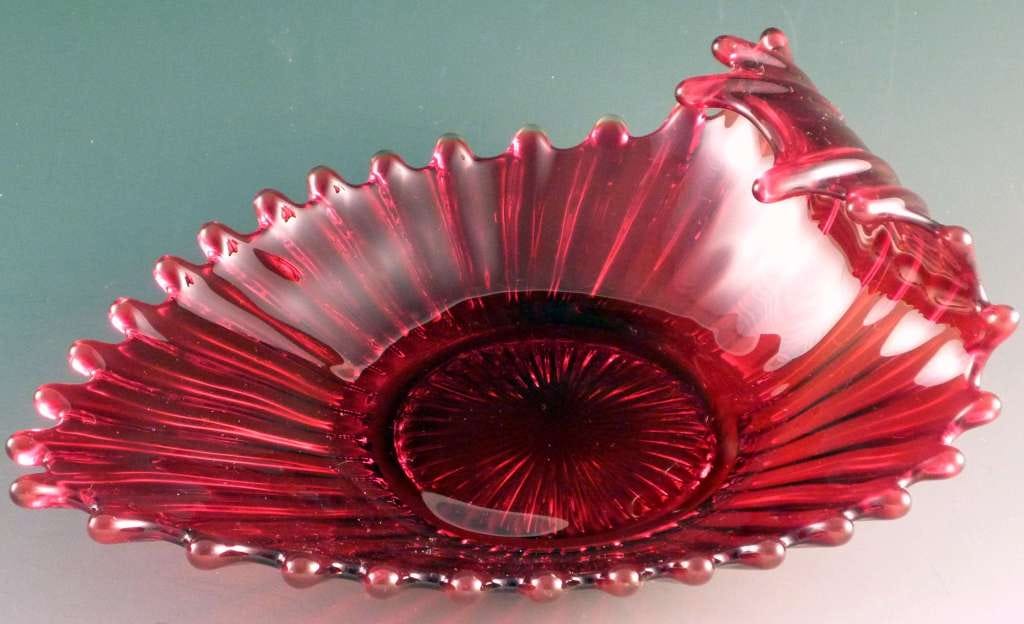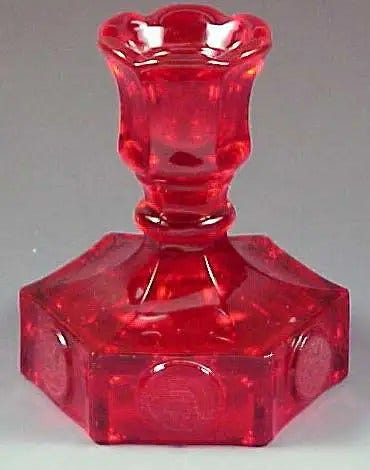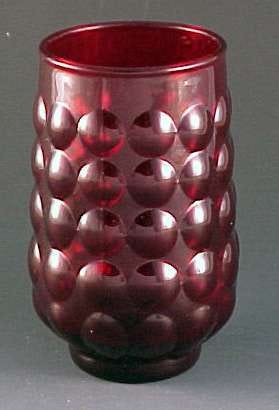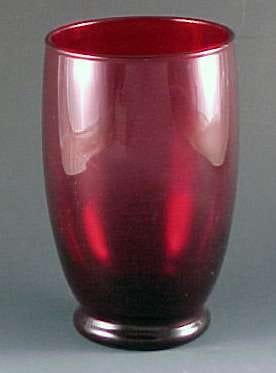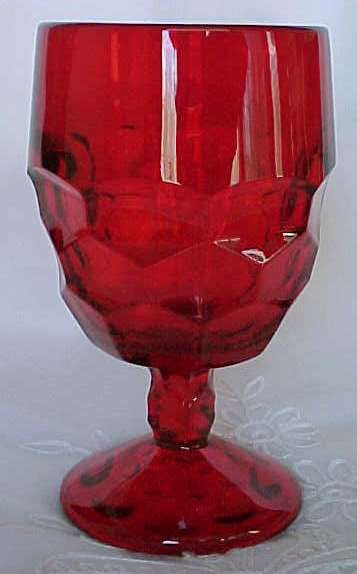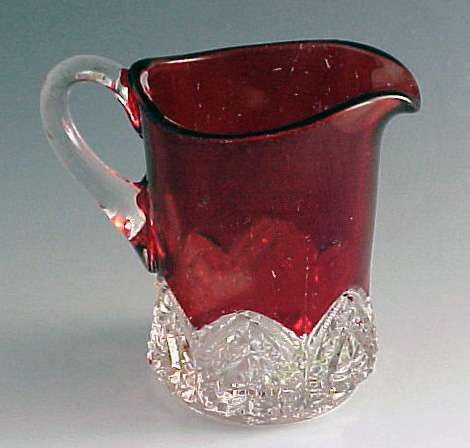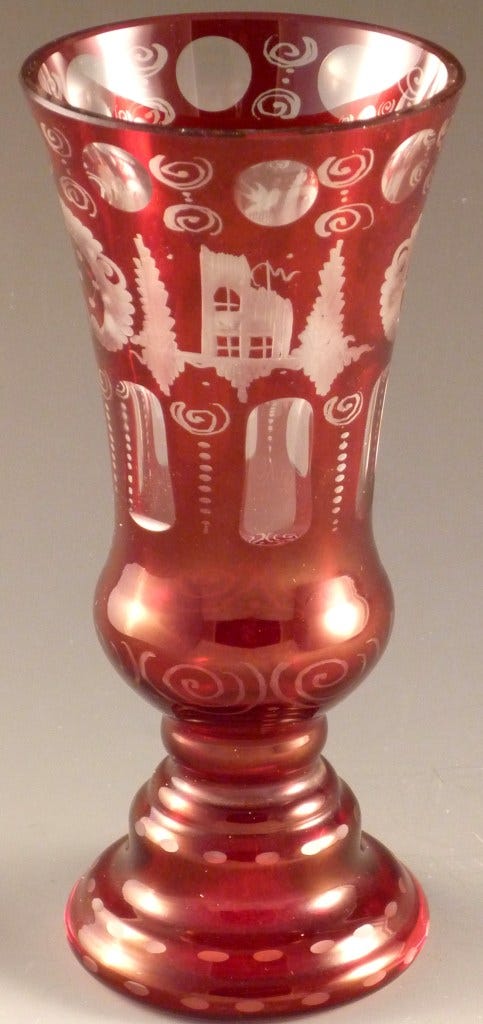Ruby Red Glass, No, It Doesn't Require Gold
Quick look at red glassware from Depression to the 1970s
It’s a myth that glass makers must use gold to make red glass; at one time they did use colloidal gold, then in the 1890s discovered how to use selenium. Selenium is much less costly than gold of course, and this led to wider use.
During the depression companies made far more pieces and patterns in other colors – green, pink, yellow, crystal, amber, blue – than in red. There are only a few patterns of mass-produced depression glass that have many pieces of red. One is Coronation from Hocking, who also made some pieces of two patterns from the later depression, Old Café and Oyster and Pearl in red glass.
This photo from the national depression glass show a few years ago shows American Sweetheart, a pattern we usually see in pink or monax white, in ruby red trimmed with gold. (It was spectacular. And far above my pocketbook.)
MacBeth Evans, who made American Sweetheart shown just above, also made a few pieces of Petalware in red. I don’t think there are many other depression glass patterns in red, although sometimes companies produced a few red pieces alongside larger, more extensive piece lists.
Elegant glass companies such as New Martinsville or Fostoria made several patterns with extensive piece lists in red glass. One quite popular pattern from New Martinsville is Moondrops. Moondrops came in several vivid colors besides red, cobalt blue, amethyst, shades of green, amber, black plus crystal. Here is the small sugar bowl. The design is hard to see in my photo; there are small raised ovals near the base of the sugar.
This very pretty laced edge bowl is from Imperial Glass. Pattern is Laced Edge, rather descriptive!
Fostoria made several patterns in red glass, although most of the older ones such as Fairfax or some stemware lines do not have extensive ruby piece lists. Three later patterns are Heirloom, Coin and Argus, Heirloom from the 1960s, Coin in the 1970s and Argus made from the mid 1960s and 1970s.
Fostoria Argus Ruby Goblets
The company that made the most red glass is Anchor Hocking, especially after the depression into the 1970s, with several mass-produced patterns. In fact they produced a line called Royal Ruby that encompassed several patterns, all united by the rich red color.
Anchor Hocking made Bubble, which is easy to recognize with its all-over pattern of raised circles, in several colors including crystal, white, Forest Green, and blue plus red. It’s mostly a post-depression pattern with some pieces made in the late 1930s.
Hocking went to town with Royal Ruby, making complete dinner sets, lots of drinking glasses plus gift and accessory items. Although I don’t seek out Royal Ruby glass, it’s almost impossible to not get a few pieces if you buy any glass. We had several sizes of tumblers.
Royal Ruby 12 Ounce Footed Tumbler
And at least two styles of cups. This one is round with a small foot. It’s on the small side and may have originally been part of a snack set.
Royal Ruby Cup with Small Foot
Hocking made at least a little Royal Ruby in many of their patterns during the 1940s and 50s and produced tons of accessory pieces like this Hoover vase.
Royal Ruby Hoover 9 in Vase with Ruffled Top
Royal Ruby isn’t a pattern but a color. Hocking used it dinnerware which is quite nice and also affordable and not too hard to find, perfect for Christmas or Fourth of July celebrations. When shopping be sure to hold pieces up to the light to check for scratches and wear, otherwise it’s not particularly susceptible to damage.
Viking Glass made several pattern lines in ruby, notably Georgian and Epic. We have an Epic ruby stemmed ruffled bowl we use at Christmas, it makes quite a statement on the table. This Georgian stemmed tumbler is Viking.
Other companies besides Viking made Georgian in red glass, including Cambridge and Anchor Hocking, and the tumblers tend to be very similar.
Besides true red glass, you might glassware flashed or stained with red. Flashing uses sprayed colors and is thin and easily worn. Staining usually is a deeper, richer color. This little souvenir pitcher is stained ruby.
You likely will see cased vases which are crystal with an over layer of red glass, often with designs cut through to show the crystal. This vase from Egermann is a good example.
Red glass is especially popular at Christmas, and of course looks wonderful in the summer for Memorial Day and Fourth of July. Royal Ruby is a great choice if you want several pieces to use for dinnerware or enjoy one of the others for accents.





